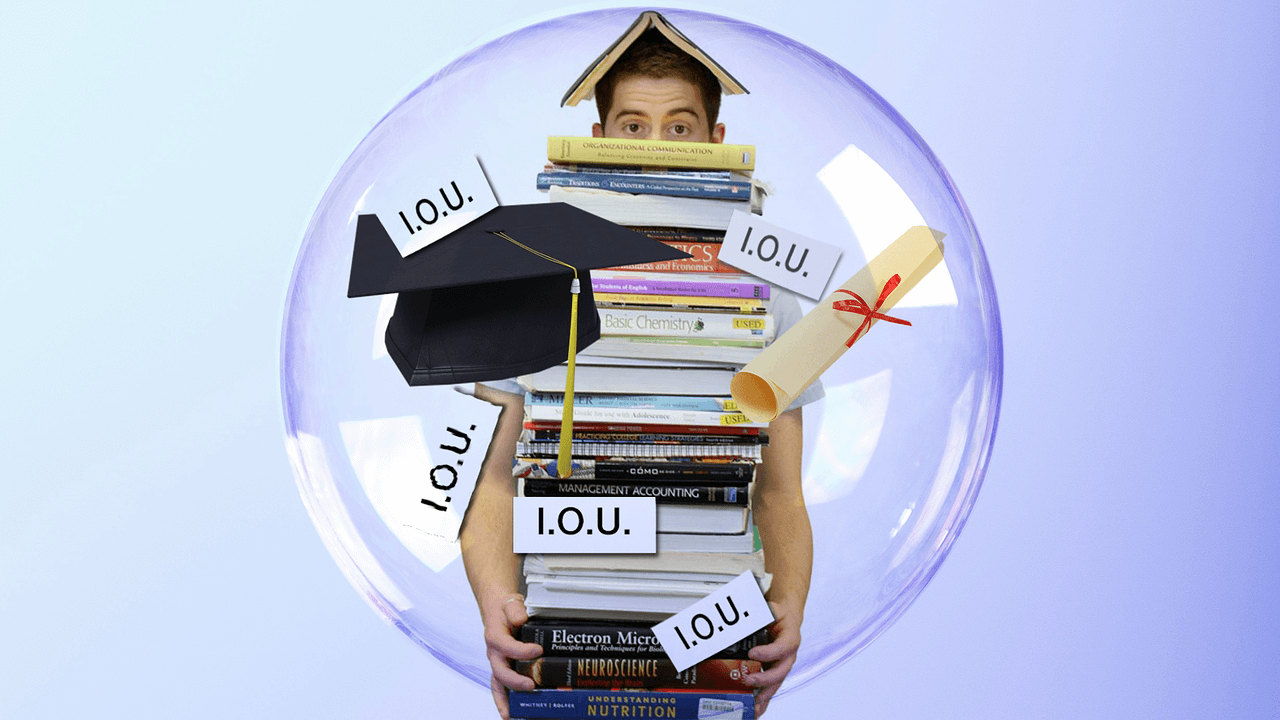Student-centric advice and objective recommendations
Higher education has never been more confusing or expensive. Our goal is to help you navigate the very big decisions related to higher ed with objective information and expert advice. Each piece of content on the site is original, based on extensive research, and reviewed by multiple editors, including a subject matter expert. This ensures that all of our content is up-to-date, useful, accurate, and thorough.
Our reviews and recommendations are based on extensive research, testing, and feedback. We may receive commission from links on our website, but that doesn’t affect our editors’ opinions. Our marketing partners don’t review, approve or endorse our editorial content. It’s accurate to the best of our knowledge when posted. You can find a complete list of our partners here.
Student Loans: The Good, the Bad, and the Ugly
 By
Kayla Korzekwinski
By
Kayla Korzekwinski 
Kayla Korzekwinski is a Scholarships360 content writer. She earned her BA from the University of North Carolina at Chapel Hill, where she studied Advertising/PR, Rhetorical Communication, and Anthropology. Kayla has worked on communications for non-profits and student organizations. She loves to write and come up with new ways to express ideas.
Full BioLearn about our editorial policies

Annie has spent the past 18+ years educating students about college admissions opportunities and coaching them through building a financial aid package. She has worked in college access and college admissions for the Tennessee Higher Education Commission/Tennessee Student Assistance Corporation, Middle Tennessee State University, and Austin Peay State University.
Full BioLearn about our editorial policies

Maria Geiger is Director of Content at Scholarships360. She is a former online educational technology instructor and adjunct writing instructor. In addition to education reform, Maria’s interests include viewpoint diversity, blended/flipped learning, digital communication, and integrating media/web tools into the curriculum to better facilitate student engagement. Maria earned both a B.A. and an M.A. in English Literature from Monmouth University, an M. Ed. in Education from Monmouth University, and a Virtual Online Teaching Certificate (VOLT) from the University of Pennsylvania.
Full BioLearn about our editorial policies

There are 43.2 million borrowers with student loan debt in the United States. It’s likely you’ve heard horror stories about student loans that make you wonder “are all student loans bad?” You should build your financial aid package with as much free aid as possible, however, if debt is managed, student loans can be good. But, if not, things can get ugly. Continue reading to learn more!
The good
Student loans can be good because they help pay for college expenses. They give a student the chance to earn their degree and the benefits that go along with that. Student loans can be good debt if the student earns enough to repay them without trouble.
Student loans can be used for more than just tuition. Both federal and private loans can be used for any educational expenses. Students can receive financial aid up to their college’s cost of attendance. Financial aid can be used for expenses like:
- Tuition and fees
- On-campus room and board
- Off-campus housing and utilities
- Transportation costs
- Books, supplies, and equipment
- Personal supplies like toiletries and medication
- Housing supplies like dishes
- Groceries
- Care for dependents
- Fees for testing and licensing costs
- Study abroad programs
Yes, Student loans can cover these expenses without having to make payments up front. Just remember, student loans must be repaid with interest. While you could take out a student loan to cover all of your educational costs for a full year, you should review your college expenses and see if you truly need the maximum amount. Review your budget and look for opportunities like Work study to offset the amount of loan you need.
See also: Using student loans for off-campus housing
Most federal and private student loans have a grace period. This is a period of time where borrowers do not have to begin making payments after leaving school. During the grace period, you have the chance to find employment and prepare to make monthly payments. The typical grace period is 6 months.
See also: What is a student loan grace period
Benefits of Federal Loans vs Private
Federal student loans come with a number of benefits. Students with financial need can receive Direct subsidized loans, meaning they don’t accrue interest while the student is in school or during the grace period.
Repaying your federal student loans can be more manageable using income-driven repayment plans (IDR). Federal student loans offer 4 income-driven repayment plans; monthly payments are calculated as a proportionate to the borrower’s income. This can make payments more manageable. Borrowers of federal loans who pay on an IDR can have their remaining balance forgiven after 20 or 25 years of payments.
The remaining balance of federal student loans can also be forgiven with Public Service Loan Forgiveness (PSLF). Borrowers must work full-time for the government or a not-for-profit organization. They must make 120 payments to receive forgiveness.
See also: Subsidized vs. unsubsidized loans
The bad
A college degree can help student borrowers get a higher-paying job, but it is not guaranteed. If borrowers can’t repay their debt in full and on time, there can be negative financial effects. In fact, 15.1% of student borrowers under 40 years old are behind on their student loan payments. It is a good idea to research how much you will pay out in student loans in relation to what your desired career might pay. This could be as simple as researching the return on investment (ROI) of that career before paying for your education.
Falling behind on payments can put borrowers into student loan default. For federal loans, default occurs after 270 days of missed payments. Default can have severe financial consequences. Your loans will become immediately due in full, and the lender can place your loan with a collection agency.
See also: Student loan default: What it is and how to avoid it
Missing student loan payments can also lower your credit score. Missed student loan payments can stay on your credit record for up to 7 years. A single missed loan payment can also drop your credit score up to 100 points. This will make it more difficult to qualify for loans or credit in the future.
See also: How do student loans affect credit?
Like other loans or credit, there is a cost for borrowing. Student loans have interest. If payments aren’t made in a timely manner, the total loan balance will grow over time. In many cases, interest can end up making a borrower’s debt larger.
See also: How does interest work on a student loan?
The ugly
One of the worst financial consequences of student loans is wage garnishment. This is a form of collections that is used by student loan lenders. It occurs when federal loans go into default. The Department of Education can take up to 15% of disposable pay from your paychecks for the defaulted loan. Disposable pay is what remains of your paycheck taxes and doesn’t take other expenses or debt into consideration.. Wage garnishment continues until the debt is repaid or the default is resolved.
See also: What Is student loan wage garnishment?
The bright side
If borrowers manage their debt and stay on track with repayment, student loans can be a good investment. As mentioned in the first paragraph, there are plenty of benefits that come with earning a college degree, including health and happiness. Studies show that college grads can expect to live a decade longer than those who drop out of high school. Sounds pretty bright to us!
Related: How much student loan debt is too much?





